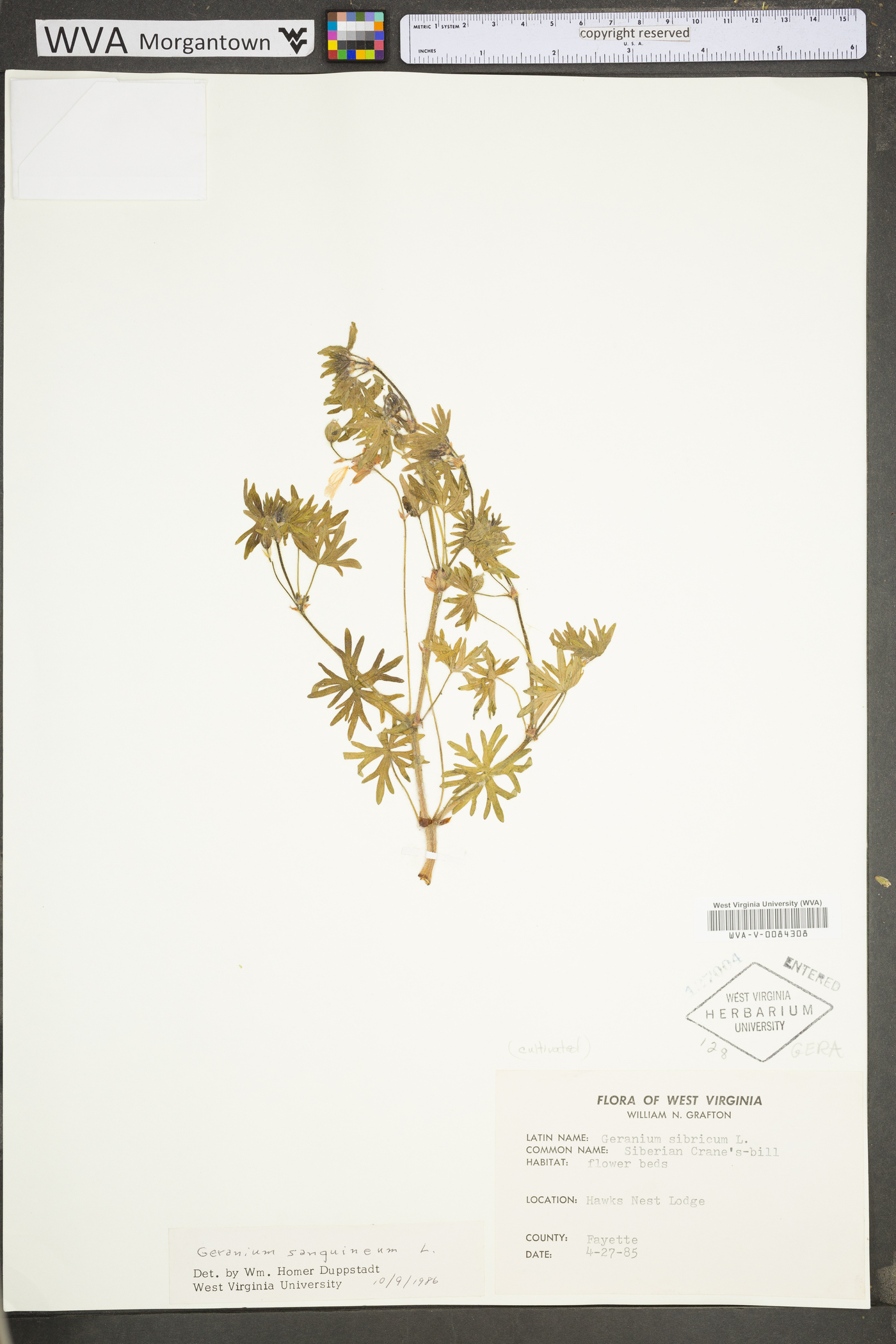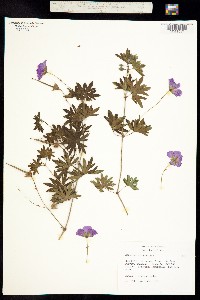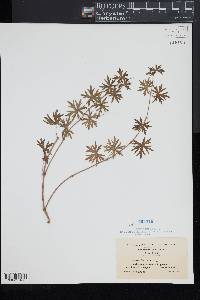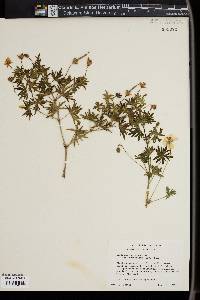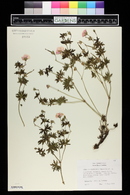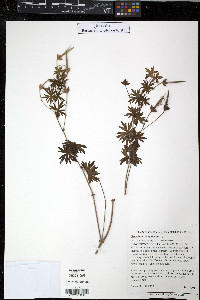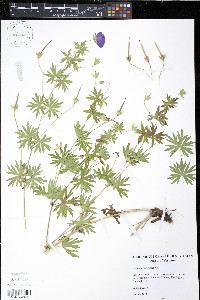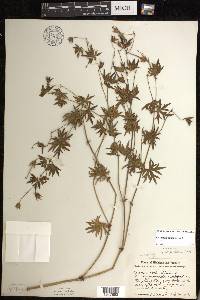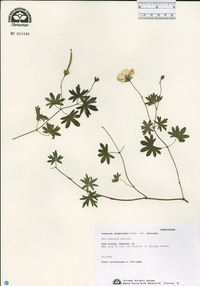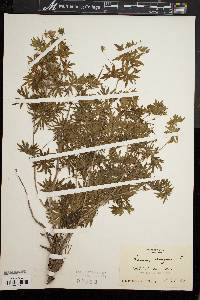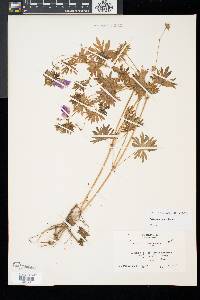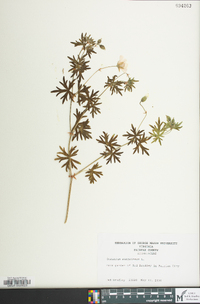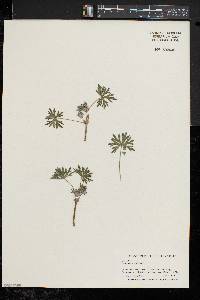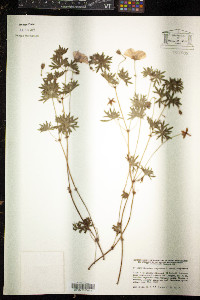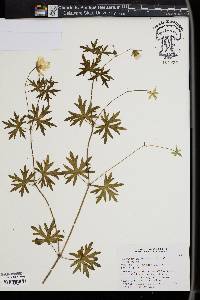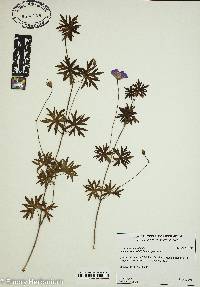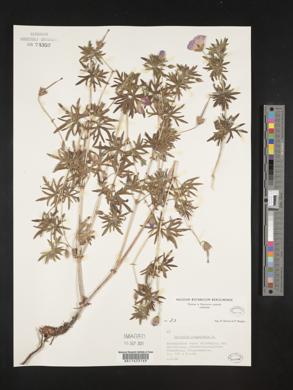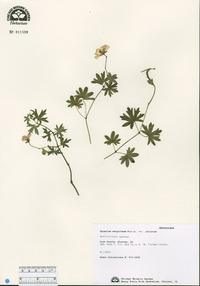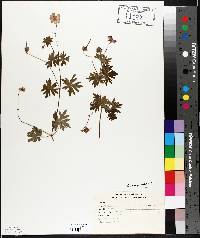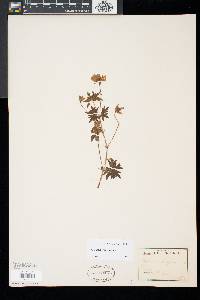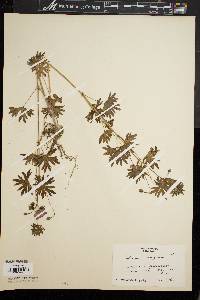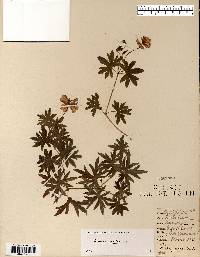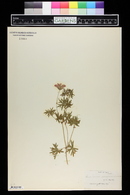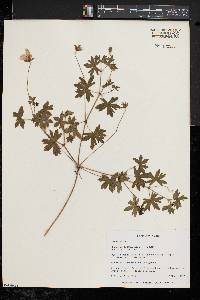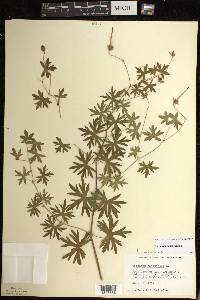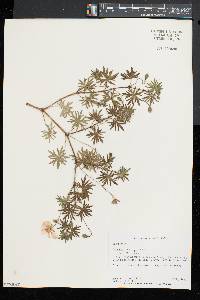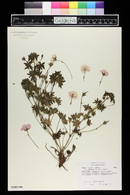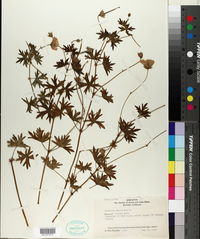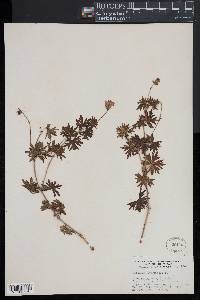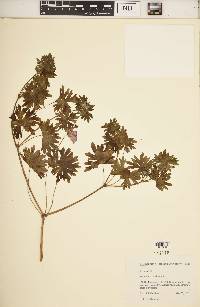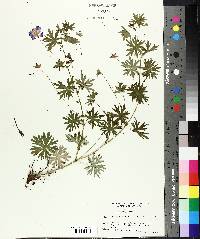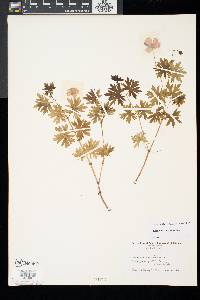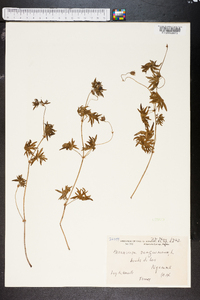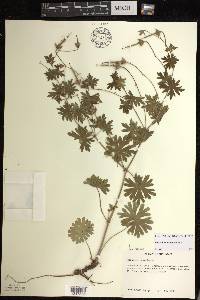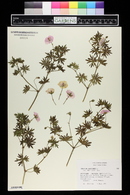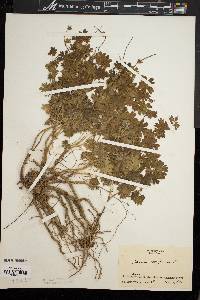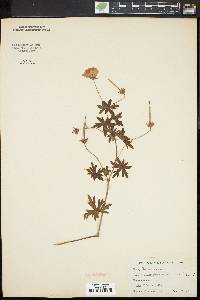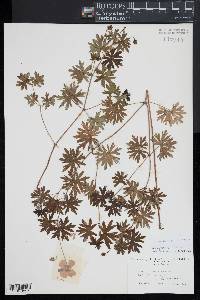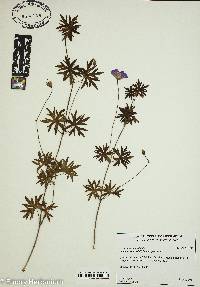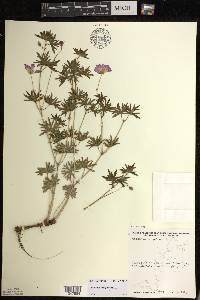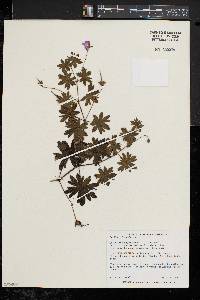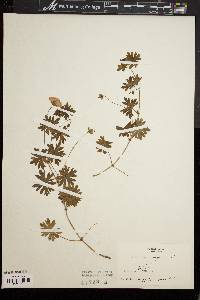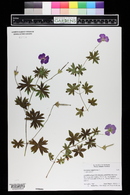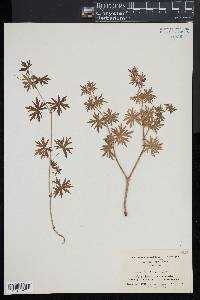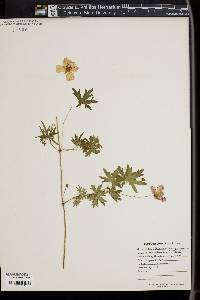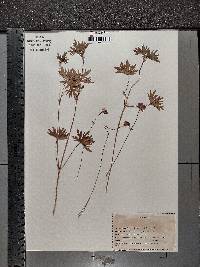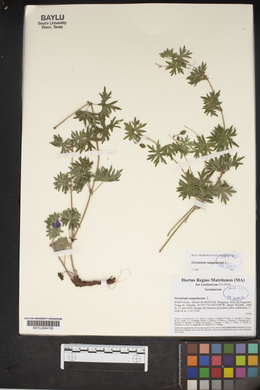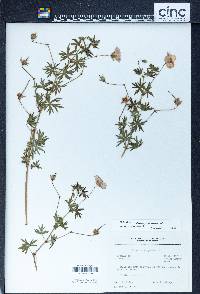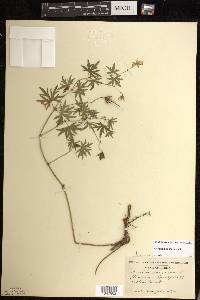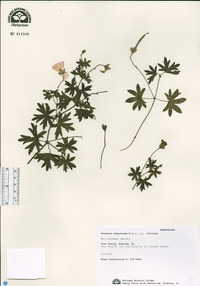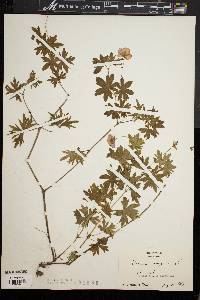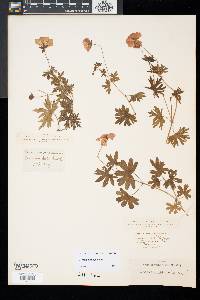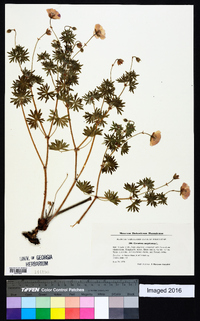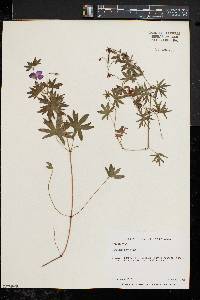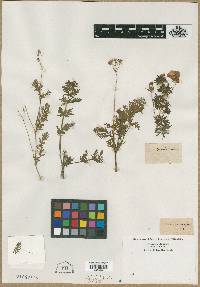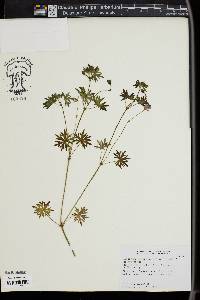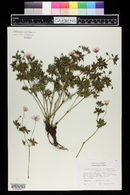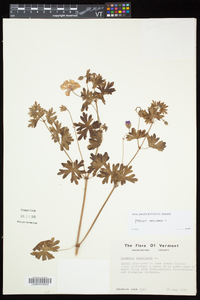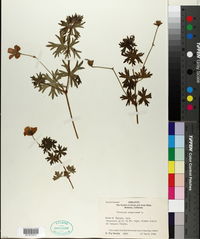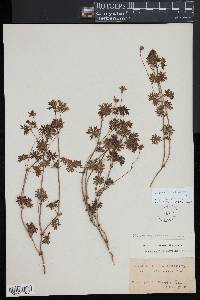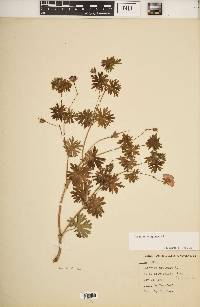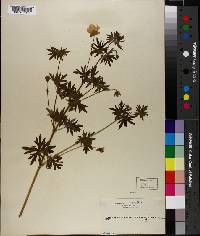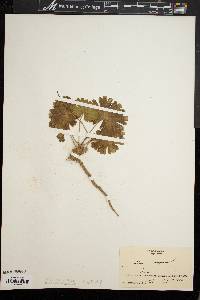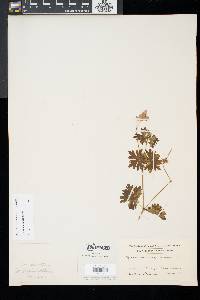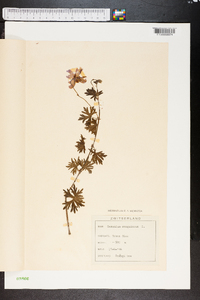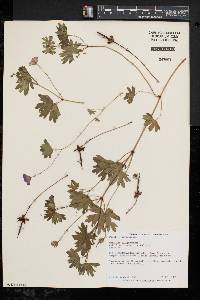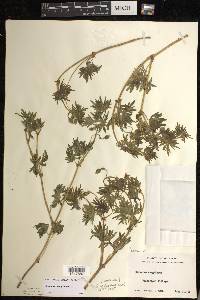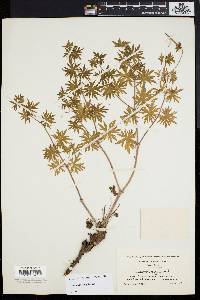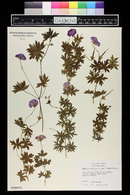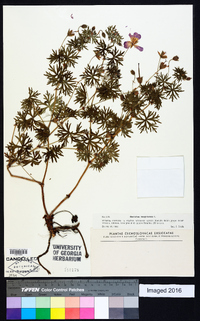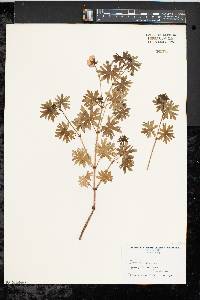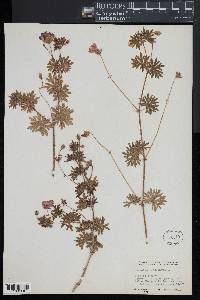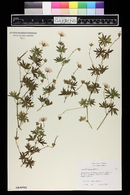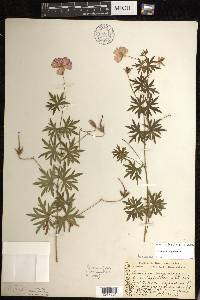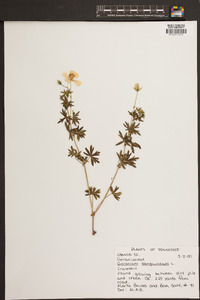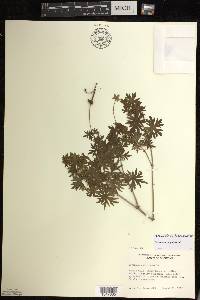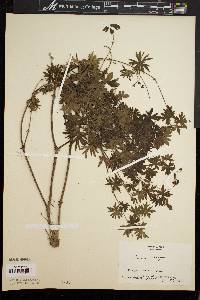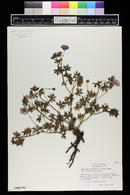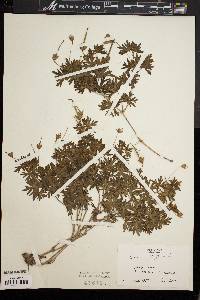
|
|
|
|
Family: Geraniaceae
Bloody Crane's-Bill
[Geranium sanguineum var. striatum Weston] |
Perennial herb 10 - 50 cm tall Stem: branched, erect or decumbent, leafy, and covered with long white hairs and stalkless glands. Leaves: several pairs per branch, opposite, stalked, 3 - 6 cm wide, deeply palmately five- to seven-lobed with the lobes often further lobed above the middle. There are rarely any basal leaves present, but if so, they tend to be the same size as the stem leaves. Flowers: reddish purple, 3 - 4.5 cm diameter, radially symmetric, and normally one per 7 - 15 cm long, axillary stalk, with two small bracts near middle of stalk. Sepals: five, alternate with petals, green, 0.8 - 1.3 cm long. Petals: five, reddish purple, 1.5 - 2 cm long, almost heart-shaped with narrowed base, and a wider and notched tip. Next to the base of each petal there is a gland, thus making a ring of five glands alternate the petals. Stamens: ten in two series, all fertile, with filaments widened at base, and large anthers (at least 2 mm long). The ring of five longer stamens are aligned with the petals, while the five shorter stamens are alternate with the petals, and thus aligned with the glands. Pistil: with a single, deeply five-lobed, superior ovary; one elongated style column; and five linear stigmas. Fruit: five, erect, hairy, non-glandular, up to 3 cm long, single-seeded, rounded base, beaked, nutlike segments surrounding remnant elongated style column of each flower. Each nutlike segment has narrowed under 5 mm long beak at its tip, which is attached to the lower part of the style column, and then is pulled upwards by the coiling outer wall of the style column, yet stays attached to the entire fruiting structure and ejects the seed from the main body of the nutlike segment. Root system: of stout, reddish, stem-like rhizomes. Similar species: Geranium sanguineum is probably most similar to our native G. maculatum, except that species usually has basal leaves (and they are larger than stem leaves), very few stem leaves, multiple flowers in branching clusters, non-notched petals, and longer (over 5 mm) beaks on the fruit. Another large, rhizomatous, non-native species this could be confused with is G. pratense, but its flower stalks, sepals and beak of the fruit are finely glandular-hairy, and the flowers hang downward after blooming. A third species, G. robertianum, is somewhat similar due to its petals being over 1 cm long, but it is an annual (or biennial) with weak roots, compound leaves, flowers in pairs, non-notched petals, and wrinkled nut-like portions of the fruit which fully separate from the style column and have two long apical beaks attached to them. The remaining native species of Geranium in the Chicago Region have much smaller petals and anthers, plus less robust root systems. Flowering: summer Habitat and ecology: A native of Europe, rarely escaping from cultivation. Our single specimen recorded from the Chicago Region does not give any specifics on where it was collected. Occurence in the Chicago region: non-native Author: The Field Museum A Eurasian sp. with very leafy stems, retuse pet, and short stylar beak, is rarely found in our range as an escape from cult. Gleason, Henry A. & Cronquist, Arthur J. 1991. Manual of vascular plants of northeastern United States and adjacent Canada. lxxv + 910 pp. ©The New York Botanical Garden. All rights reserved. Used by permission. From Flora of Indiana (1940) by Charles C. Deam Indiana Coefficient of Conservatism: C = null, non-native Wetland Indicator Status: N/A |

